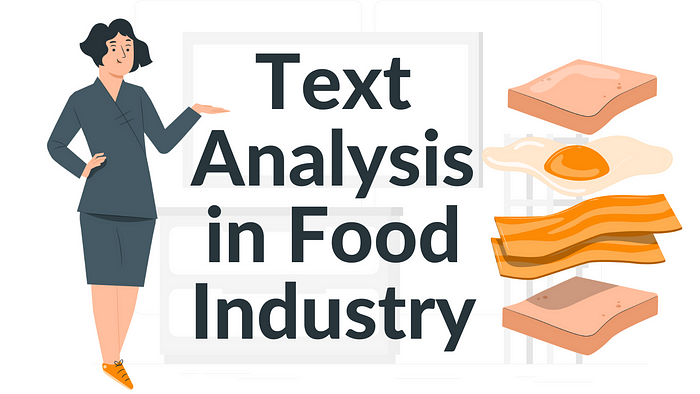Text Analysis in Food Industry

The food sector is gradually growing worldwide, with operators and manufacturers accounting for the vast majority of the global market share. The food industry as a whole includes all businesses that serve meals for immediate consumption, such as restaurants, cafeterias, and catered shops. Food product developments, personalization, and increased demand for healthy meals among target groups are all effectively contributing to the expansion of the foodservice space.
Restaurants are eager to adopt new technologies in order to deliver better, more personalized service. One of the most sought-after options is text analytics.
The unstructured text contains more than 80% of the total information. Text analytics can help you meet your consumers’ expectations by allowing you to easily analyze large amounts of text data.
The text analysis solution assisted the foodservice client in assessing customer views of the brand. The client was also looking for techniques to evaluate customer sentiment using scoring systems.
Furthermore, the food service customer was able to gather information from readily available sources, such as internet reviews and social media debates, in order to better optimize the company’s products and services. The interaction also assessed customer feedback and assisted the client in doing social market research.
Application of Text Analysis in the Food Industry
- Text analysis can help businesses gain extensive insights into their customers’ behavior and emotions, which can then be used to drive sales.
- Text analysis can also anticipate how they will affect the flavor and quality of the dish.
- The insights gathered from this analysis will be used to identify problem areas and suggest improvement actions.
- Target market surveys can benefit any consumer activity, and text analysis allows you to examine open-ended questions.
- Restaurants can swiftly examine thousands of text-heavy surveys and evaluations to improve their services.

Some Common Methods of Analyzing Texts in the Food Industry-
Intent Detection
Analyze support data or incoming tickets and identify the intent of the author. Identify purchase intent, complaints as well as queries and provide solutions with greater efficiency.
Analyze customer reviews and complaints to identify key issues that your patients face. Classify and prioritize issues based on urgency.
Semantic Similarity
Dissect and interpret large volumes of unstructured text and identify the similarities between the services offered in the industry.
Semantic similarities can be used to extract similar and related keywords from complex and unstructured pieces of text and increase your SEO authority.
Feature Extraction
Extract market and competitive intelligence from unstructured text. Analyze reviews to understand customer expectations or get competitive insights to grow your business.
Sentiment Analysis
Crowdsource reviews and analyze them with text analytics to dissect the sentiments, opinions, reviews, and suggestions of your customers.
Extracting and analyzing reviews, opinions, suggestions, and social media posts to examine sentiments.
Keyword Extraction
Automate extraction of business and competitive intelligence from unstructured text. Analyze feedback data and uncover valuable insights.
You can summarise the textual data and key points of discussion for social media analysis.




Comments
Post a Comment